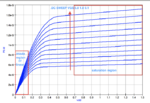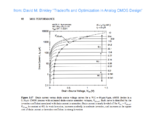vineel13
Newbie level 6
Well I am aware that voltage controlled resistors can be designed using MOS transistors, but these devices would only work if they are operated in their ohmic/linear region. But suppose if I still want to get a linear change in resistance even below the cutoff/threshold voltage (0.6-0.7 V),
is there any mechanism or other circuitry which can be used to achieve this ?
Thank You.
is there any mechanism or other circuitry which can be used to achieve this ?
Thank You.

